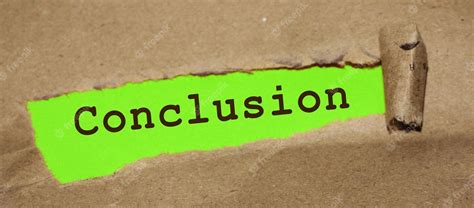The Ultimate Guide to Dog Undercoat Brushes: Grooming Your Furry Friend for Maximum Comfort and Health
Maintaining a well-groomed coat is crucial for every dog's overall health and well-being. A dog's undercoat, in particular, plays a significant role in regulating body temperature and keeping the skin healthy. Regular brushing with an undercoat brush is essential for removing loose fur, preventing mats and tangles, and promoting skin health. This comprehensive guide will provide you with all the necessary information on dog undercoat brushes, their benefits, and how to choose the right one for your furry companion.
Why an Undercoat Brush Matters: Benefits of Regular Brushing
Brushing your dog's undercoat offers numerous advantages for both the dog and the owner. Here are some of the key benefits:
1. Promotes Skin Health:
Regular brushing removes loose fur, dirt, and debris from the undercoat, preventing bacteria and fungus buildup. This promotes healthy skin, reduces itching and irritation, and prevents skin infections.

2. Prevents Mats and Tangles:
An undercoat brush helps detangle and remove mats and tangles, which can cause discomfort, skin irritation, and even pain. Regular brushing keeps the undercoat smooth and free of knots.

3. Reduces Shedding:

Undercoat brushes effectively remove loose fur before it sheds, reducing the amount of hair that ends up on your floors, furniture, and clothes.
4. Improves Coat Appearance:
Regular brushing with an undercoat brush distributes natural oils throughout the coat, giving it a healthy sheen and luster.
How to Choose the Right Dog Undercoat Brush
Selecting the appropriate undercoat brush for your dog depends on several factors, including coat type, length, and breed. Here are some guidelines to help you make the right choice:

1. Pin Brush:
Pin brushes have widely spaced, rounded pins that are ideal for penetrating the undercoat and removing loose fur. They are suitable for dogs with medium to long coats.
2. Slicker Brush:
Slicker brushes have densely packed, wire bristles that effectively detangle mats and remove loose hair. They are best suited for dogs with short to medium coats.
3. De-Shedding Tool:
De-shedding tools are specifically designed to remove large amounts of loose hair from the undercoat. They have curved blades that cut through the loose hair without damaging the topcoat.
Comparison of Pros and Cons
| Brush Type |
Pros |
Cons |
| Pin Brush |
- Gently removes loose fur |
- Not as effective for mats and tangles |
| Slicker Brush |
- Effective for mats and tangles |
- Can be harsh on sensitive skin |
| De-Shedding Tool |
- Removes large amounts of loose hair |
- More expensive than other brushes |
How to Use an Undercoat Brush
-
Frequency: Brush your dog's undercoat at least once a week, or more frequently during shedding season.
-
Brushing Technique: Hold the brush parallel to the skin and gently brush in the direction of hair growth. Start from the head and work your way back.
-
Pressure: Use light pressure to avoid irritating the skin.
-
Time: The duration of brushing varies depending on the size and coat of the dog. Aim for 10-15 minutes per session.
Stories and What We Learn
Story 1:
Belle, a 6-year-old Golden Retriever, had severe matting in her undercoat. Her owner had not been brushing her regularly, and the mats were causing discomfort and skin infections. After using an undercoat brush, Belle's mats were removed, her skin healed, and her coat became healthy and shiny.
Lesson Learned: Regular brushing is essential to prevent matting and its associated problems.
Story 2:
Max, a 2-year-old Labrador Retriever, shed excessively, covering his owner's clothes and furniture with hair. Regular brushing with a de-shedding tool significantly reduced Max's shedding, making it easier for his owner to maintain a clean home.
Lesson Learned: Using a de-shedding tool can effectively reduce excessive shedding.
FAQs
1. Can I use a human brush on my dog's undercoat?
No, human brushes are not designed for dogs' undercoats and can damage the hair.
2. How often should I brush my dog's undercoat?
Aim for at least once a week, or more frequently during shedding season.
3. What should I do if I find mats in my dog's undercoat?
If the mats are small, try using a de-matting spray or conditioner and gently working them out with your fingers. For larger mats, consult a professional groomer.
4. What are the signs that my dog needs an undercoat brush?
Excessive shedding, mats, tangles, and skin irritation can all indicate the need for undercoat brushing.
5. Can I use an undercoat brush on a puppy?
Yes, but be gentle and use less pressure.
6. What are some additional tips for brushing my dog's undercoat?
Make brushing a positive experience by praising and rewarding your dog. Avoid pulling or tugging at the hair, and if your dog is resistant, try changing brushes or brushing in shorter sessions.
Conclusion
Regular brushing with an undercoat brush is a crucial aspect of every dog's grooming routine. It promotes skin health, prevents mats and tangles, reduces shedding, and enhances the overall appearance of the coat. By understanding the different types of undercoat brushes, choosing the right one for your dog, and using it correctly, you can ensure that your furry friend enjoys a healthy and comfortable coat that you will both love.
